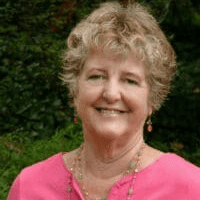When attachment theory was blossoming, it didn’t provide an accompanying toolbox of tactics and techniques, though it did offer a new therapeutic attitude, justifying deep, soul-felt work, which offered a genuinely new beginning towards treatment for adult attachment disorder.
Psychodynamic therapists certainly understood the enduring impact of childhood experiences, but even if they’d been fascinated by attachment studies, it was still an open question how these early mother–child bonds might play out in adult psychopathology.
Beginning in the 1970s and throughout the ’80s, Mary Main–a research psychologist at the University of California, Berkeley–began interviewing parents and studying their interactions with their babies.
In those days, the groundbreaking innovations influencing clinical practice came not from the attachment literature, but from the iconoclastic rebels promulgating the gospel of family systems theory.
In the study, they found that attachment rejection or trauma in a mother’s childhood was systematically related to the same sort of attachment issues between her and her child.
From this kind of attachment research, Main and her colleagues devised an interview method—the Adult Attachment Interview (AAI).
This interview contained 20 open-ended questions about people’s recollections of their own childhood, including:
- Describe your relationship with your parents.
- Think of five adjectives that reflect your relationship with your mother.
- What’s the first time you remember being separated from your parents?
- Did you ever feel rejected?
- Did you experience the loss of someone close to you?
- How do you think your experience affected your adult personality?
More important than the specific content gathered from this attachment research—which could be more or less accurate—was the way people responded.
Whether their personal narratives were coherent or confused, whether they dismissed the questions with short, uninformative answers, or whether they rambled on pointlessly provided real—and ultimately, empirically validated—insights about their state of mind, emotional processes, and capacity to form relationships.
Main’s goal, she said, was to “surprise the unconscious” into revealing itself.
Furthermore, the AAI has, over the years of repeated use, been found capable of targeting, with more than 80 percent predictability, how a child of the adult interviewee would be attached to his/her parent.
While other variants of adult attachment measures have been developed, the AAI set the stage for an empirically validated way of following the transmission of attachment patterns from generation to generation—documenting a kind of psychic lineage from parent to child to grandchild.
In fact, according to psychology researchers Howard and Miriam Steele in Clinical Applications of the Adult Attachment Interview, the AAI was “the single most important development in attachment research over the last 25 years.”
Mary Sykes Wylie
Mary Sykes Wylie, PhD, is a former senior editor of the Psychotherapy Networker.
Lynn Turner
Lynn Turner, PhD, LCSW, has used the Enneagram in her practice since 1995 with clients of all ages. She teaches Enneagram seminars locally and nationally and is writing an Enneagram book for psychotherapists. Website: www.lynnsenneagram.com.














